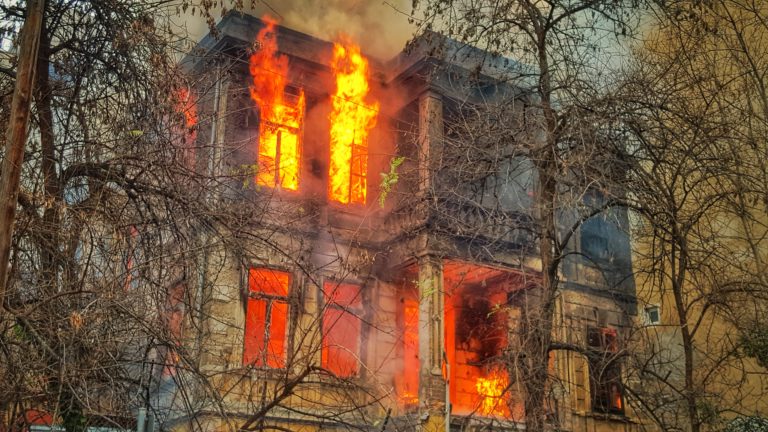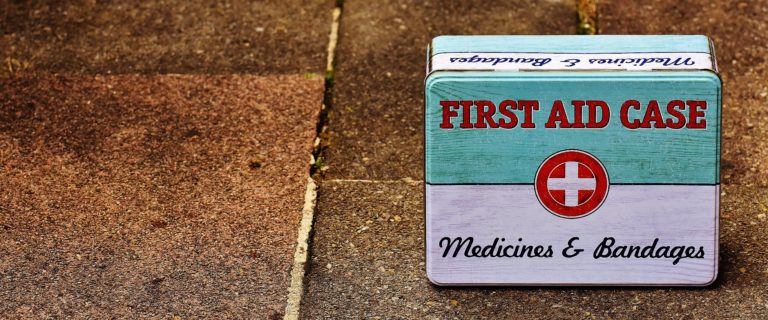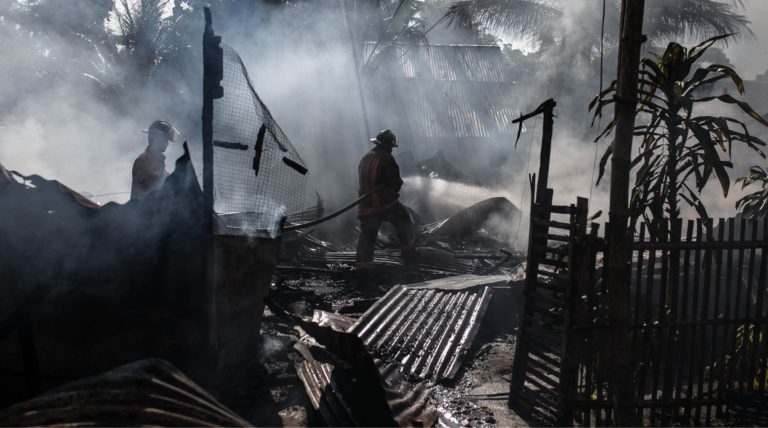What To Do And What To Bring During An Emergency Evacuation
by Noemi Pamintuan-Jara / July 30, 2019
An emergency evacuation is a harrowing experience. It’s not something you would want to go through. But knowing what to do during life-threatening circumstances could spell the difference between life and death for you and your loved ones.
I went through it one humid summer afternoon.
Fear and panic
It was a sunny, windless day. My laptop and aircon were working overtime so I could meet a project deadline. By mid-afternoon, I decided to prepare dinner earlier than usual.
I was almost done when I heard people shouting, “May sunog!” (There’s fire!)
I looked at what I was cooking. It didn’t look burnt. Maybe it smelled burnt because the kitchen exhaust fan sucked out the smoke.
When I looked up, I saw thick smoke. It looked like the kind emitted by steam trains. The smoke completely blocked my view of the trees right outside my kitchen window. I knew it was serious.

The neighbors kept shouting. My sister asked us to call the fire department, then she darted off to knock on the neighbors’ doors. Most of them were still unaware that there was a house burning inside our compound.
Having knowledge of and being involved in disaster risk reduction (DRR) training didn’t spare me from the mixed emotions: fear, panic, sadness.
Fight-or-Flight Response
Stressful circumstances cause our body to physiologically and psychologically go into “fight” or “flight” mode. It’s our body’s way of responding to danger. We either stay and deal with the actual or perceived threat, or we run away to safety.
Kendra Cherry, a psychosocial rehabilitation specialist and author of Everything Psychology Book, describes some symptoms that people experience during a fight-or-flight scenario:
- Rapid Heart Beat and Breathing, to supply enough fuel (in the form of oxygen and energy) to the body which needs to quickly respond during a dangerous situation.
- Pale or Flushed Skin indicates that the body’s stress detectors have reduced blood flow to surface areas, and increased flow to the brain, muscles, legs, and arms to enable quick decision-making and mobility.
- Dilated Pupils enable a clear vision and heightened awareness of surroundings.
- Trembling is a manifestation of tensed muscles ready for karate chops or for a quick escape from danger.
As I was packing our stuff, I vividly remember experiencing the first symptom as I was worrying how my escape would unfold. I could see the fire quickly spreading just outside our window. I couldn’t see anybody exiting the burning house, which stressed me out further. Perhaps because I had experienced numerous natural disasters, emergency situations and drills in my life, my mind went on auto-pilot mode, and I immediately accessed my mental checklist of what to do during life’s unexpected events.
An emergency checklist will give you peace of mind
Living in the Philippines exposes us to all sorts of natural and man-made disasters. The Program on Resilient Communities of the Harvard Humanitarian Initiative cites a study that ranks the Philippines “among the top three countries in the world for population exposure and vulnerability to hazards.”
Part of resilience is planning ahead and preparing an emergency checklist. It will come in handy because there may not be enough time to remember and gather all the essentials you need to bring when disaster strikes.
Here’s what you can bring and do:
1. IDs and Important Documents
Government-issued IDs like driver’s license, passport, and SSS are very troublesome to replace. Save yourself from the pain and inconvenience of lining up at government offices to get an ID replacement. The same goes for legal, financial, and medical documents like birth certificates, marriage certificates, house and lot titles, wills, insurance policies, and medical records.
It’s best to keep documents in waterproof envelopes in a designated area where it’s easy for you to grab-and-go during an emergency. Having a scanned copy of these documents uploaded to a cloud storage might also help. This will give you access to important information even if you don’t have a physical copy. You will need these items in case you have to start your life all over again.
2. Cash, Keys, Gadgets, Chargers
These small items are easy to forget even on ordinary days, but are very important to have with you during an emergency to accomplish ordinary tasks and for mobility. Gadgets and chargers keep you connected to work, school, and family. Your cash, credit cards, and checkbooks will sustain your daily expenses as evacuee, and will tide you over post-evacuation.
3. Medicine, First Aid and Hygiene Kits
Prescription medications, supplements and your can’t-live-without-it wellness kit will come in handy to manage the possible health effects of stress during and after an evacuation. A hygiene kit (toiletries, feminine products, diapers, wipes) can help you stay clean and worthy to face other human beings.

4. Clothes and Multi-purpose Accessories
It may be difficult to “Marie Kondo” your closet and bring only a couple of clothes that spark joy, but during an emergency, you need to pack what brings you joy and is versatile in form and function. Pick clothes that can be used at home and are decent enough to use for work or errands, such as wrinkle-free pants and tops.
A light scarf or malong (traditional Filipino “tube skirt”) is a handy item to have around. It can be used to keep you warm, dry, or provide a discreet space in public, if needed.
While waiting for firefighters to extinguish the fire, I tried to keep calm as I looked after my niece and some neighborhood kids at our makeshift evacuation area. My niece was visibly upset and scared, and she said she felt cold. I put my light scarf around her and applied some balm to keep her warm and calm. We also offered water to the kids, giving hugs and back rubs to those who were crying.
Remember also to bring extra underwear and socks, because these items can’t be borrowed or used as hand-me-downs from well-meaning souls.
5. Pets
As you move to safety with your pet, remember to prepare and bring with you a pet care kit, with food, water and medication, as part of your emergency pack. Many people feel that pets are part of the family, and you want to ensure all their needs are also addressed during a stressful time.
Like humans, pets have different reactions to stress.
Our elderly dog was calm and even took a nap amidst the bustle of neighbors and firefighters moving around. On the other hand, our younger dog, who always panics at the slightest noise, was jittery. He blocked my path and gave me agitated looks as I walked out of our front door carrying five bags of belongings. I told him, “Keep calm. I will just put this stuff down and come back for you. Better yet, walk with me to the garage.” He disappeared, and we couldn’t find him when it was time to move back home after the fire was contained. In the evening, we heard a knock on our gate. Lo and behold, it was our dog!
6. Shut off utilities
This is something I wish I had known before the evacuation. Shutting off utilities like electricity and gas can prevent fire from escalating due to explosion. I’m glad this did not happen, even though I wasn’t able to do this task.
If you want to make your own list, you can check resources like HouseLogic, Very Well Mind, Forbes and Harvard.

What matters most
When you are in a hurry to evacuate because of an emergency, you may have to leave behind material things that are not part of your checklist. This thought may break your heart, due to the sentimental value of what you have lost. Mentally prepare for this scenario, and be open to the idea that you may never be able to go back to your home.
Remember to make your and your family’s safety a priority over material things you can buy. It may take time and money to recover the possessions you have lost, but your life is priceless. Realize instead that the value of what you lost does not rest on the physical presence of that thing, but in the memory attached to it that brings you joy.
Also, what you may have lost in a disaster will be replaced by virtues that can take others many years, or even a lifetime, to learn: empathy and compassion for those who have to leave their lives and homes behind.



